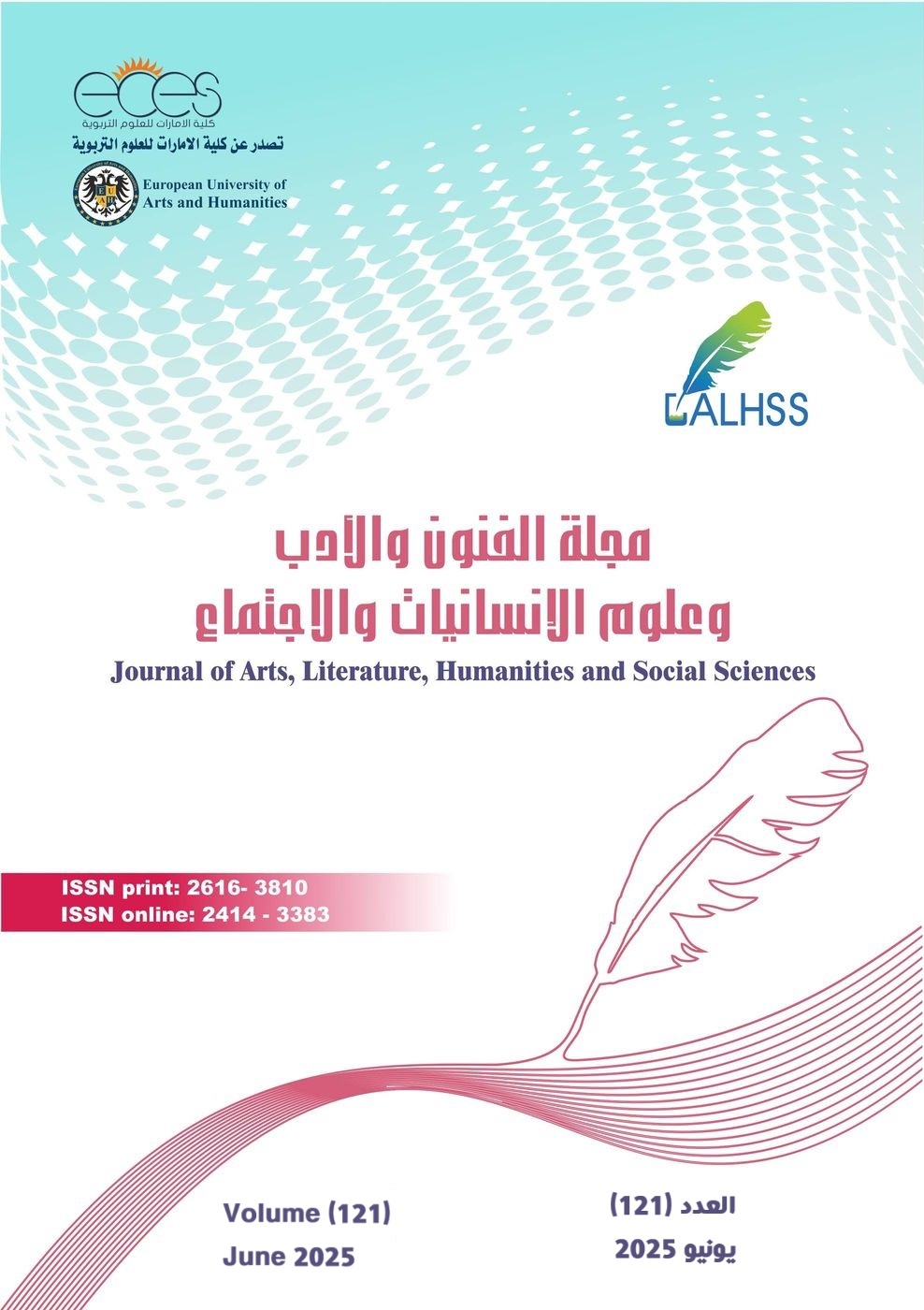Regional Museums and their Role in promoting the Cultural Identity of the Visually impaired in the Kingdom of Saudi Arabia
Abstract
Regional museums are among the most important types of museums that can contribute to showcasing the rich and diverse cultural identity of each region of the Kingdom of Saudi Arabia and promoting it among visitors from both local and international communities, regardless of their demographic differences. One of the most significant groups in society is individuals with visual impairments. According to the 2022 General Census of Population and Housing, the percentage of people with disabilities and difficulties in Saudi Arabia reached 5.9%, amounting to 1,349,585 individuals out of a total population of 32,175,224. This group has received relatively little attention, especially in the fields of culture and arts, due to their loss or severe impairment of sight and their inability to experience visual artworks or historical artifacts in museums. This is particularly true for regional museums, which are the focus of this study. Regional museums are a developing sector in Saudi Arabia and are continually striving to grow and integrate with other sectors to achieve the objectives of Saudi Vision 2030, particularly regarding the rights and responsibilities of people with disabilities, as well as fostering national identity, belonging, loyalty, and building the Saudi personality in line with our cultural identity.
Individuals with visual impairments (both blind and low vision) are among the groups that require specific accommodations tailored to their tactile and auditory communication methods. The study concluded with several findings, the most important of which is that cultural identity for people with visual impairments can be promoted through the establishment of specialized sections in regional museums in the Kingdom of Saudi Arabia.
References
13. أبو لبده، محمود احمد (2024م) نحو متاحف ذات إتاحة كافية: ذوو الإعاقة البصرية وإتاحة المتاحف في مصر، مجلة کلية السياحة والفنادق - جامعة مدينة السادات، العدد (8)، المجلد (2).
14. آدم، أحمد حسين عبد الرحمن. (2018). دور المتاحف في الحفاظ على الهوية الثقافية في السودان.
15. الاصقه، شذا إبراهيم (2022م)، الهوية الثقافية لأشغال المعادن المعاصرة في المملكة العربية السعودية وفق قراءة موريس ويتز، المجلة العربية للعلوم ونشر الأبحاث – مجلة العلوم الإنسانية والاجتماعية، المجلد (6)، العدد (13).
16. دور التراث الثقافي في حفظ الهوية الثقافية العربية من وجهة نظر أعضاء هيئة التدريس في الجامعات الحكومية الأردنية.
17. راشد، محمد جمال (2021)، أنواع المتاحف ومعايير تصنيفها، مجلة الاتحاد العام للآثاريين العرب، المجلد (22)، العدد (1).
18. رقية، طرشاوي (2023م)، التراث الثقافي ودوره في الحفاظ على الهوية، مجلة آفاق الفكرية، المجلد (11)، العدد (02).
19. شافعي، هوازن عبد المنتصر (2021م)، فن الطباعة ودوره في إثراء الصورة الذهنية للمكفوفين المستمدة من المعالم الأثرية بالمملكة العربية السعودية، رسالة دكتوراة، كلية التصاميم والفنون، جامعة جدة، المملكة العربية السعودية.
20. مصطفى، قناوي وأخرون (2017)، دور المتحف في تشكيل الهوية الثقافية، جامعة الحميد بن باديس -مستغانم-
21. الموقع الرسمي للمتحف المصري بالقاهرة، تاريخ الدخول: 11-11-1446 هـ https://egyptianmuseumcairo.eg/ar/egyptian-museum-cairo-amenities/
22. النجار، ايمان رجاء صالح (2023م)، مقومات الهوية الثقافية السعودية في المنسوجات المعاصرة، كلية التربية الفنية، جامعة حلوان، بحوث في التربية الفنية والفنون، المجلد (24)، العدد (2).
23. Cavazos Quero, L., Iranzo Bartolomé, J., & Cho, J. (2021). Accessible Visual Artworks for Blind and Visually Impaired People: Comparing a Multimodal Approach with Tactile Graphics. Electronics, 10(3), 297. https://doi.org/10.3390/electronics10030297
24. Meliones, A., & Sampson, D. (2018). Blind Museum Tourer: A System for Self-Guided Tours in Museums and Blind Indoor Navigation. Technologies, 6(1), 4. https://doi.org/10.3390/technologies6010004
Copyright (c) 2025 غادة عبد الوهاب عبد الله علي , أ.د تبرة جميل طه خصيفان

This work is licensed under a Creative Commons Attribution-ShareAlike 4.0 International License.



